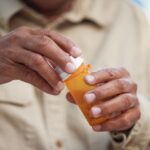The journey through recovery has many ups and downs, times when you’ll feel confident and powerful and times when you’ll feel like relapse is imminent. Much like riding waves as a surfer, cravings and urges to use can swell up and come crashing down on you. How do you deal with that? One approach is called urge surfing.
How Does Urge Surfing Work?
Clinical psychologist Dr. G. Alan Marlatt developed the concept of urge surfing, a technique in which the use of short interventions could help prevent relapse. He worked in the 1980s through the early 2000s to develop this idea and create an effective program. It gained the support of numerous industry organizations for its effectiveness.
It’s normal for a person to feel a strong sense to return to a past place, such as using drugs or alcohol, because it feels familiar and comfortable, especially if they are dealing with stress. What Dr. Marlatt learned was that those feelings or urges are often felt as physical sensations within the body. For example, a person with cravings may develop an upset stomach or an intense headache. People feeling stressed may feel pain and discomfort in the neck and shoulders.
In urge surfing, the goal is to recognize the feelings that are occurring and then take the time to deal with them. For example, if cravings for drugs or alcohol arise, instead of pushing them aside, the goal is to step back and say, “I’m feeling cravings.”
You acknowledge the feeling without judgment against yourself and or any negative thoughts, like fear or guilt, about what you’re experiencing. By doing this, you ease the tension surrounding the craving and accept that what you’re feeling is natural as your body tries to adjust to a new world without substances.
Practicing urge surfing regularly will eventually lessen the cravings and the accompanying physical sensations. Rather than fight against a big wave of craving, you learn how to embrace it and ride with it until it softens and dissipates.
How Can You Apply Urge Surfing in Your Life?
One of the best first steps to practicing urge surfing is learning how to meditate and use mindfulness techniques to help to bring yourself to a grounded place. Mindfulness is the process of putting all of your attention on the present moment, focusing on what you are doing and on physical sensations. This process helps to reduce anxiety and fear and may also help to boost your outlook and self-confidence.
Here are a few specific steps involved in urge surfing.
- Find a place to be alone, where it’s quiet and free of potential distraction. Sit comfortably and close your eyes so you can focus on your thoughts and feelings.
- Locate where your body is feeling sensations created by cravings or negative thoughts. Do you feel an ache or throbbing in your head, any aching muscles, or perhaps tension in your shoulders?
- Focusing on those physical feelings, try to describe them to yourself. Give them dimension, color, shape. What do they feel, look, smell, sound, and taste like?
- As you focus on the feelings, concentrate on your breathing, slowing it down. Breathe in fully and let the exhale be at least as long as the inhale.
- As you start to feel calmer, return to those physical sensations. Have they changed? Then, focus on breathing again. Do this several times until you feel the sensations ease and begin to melt away.
Urge surfing is a powerful process, though it takes some practice to get through it. As your self-awareness and mindfulness increase, surfing your urges will get easier.
Do You Need Help Today?
While urge surfing can be a compelling tool to use day-to-day, don’t ignore the intensity of your cravings. If you are thinking about using again, it’s time to seek out help through relapse prevention. Contact English Mountain Recovery today to learn more about how our team in Sevierville, TN, can help you.
 Looking into Tennessee intensive outpatient programs? To learn more about programs offered at English Mountain Recovery, call and speak with someone today at (877) 615-8569. We are ready to help you or your loved one recover.
Looking into Tennessee intensive outpatient programs? To learn more about programs offered at English Mountain Recovery, call and speak with someone today at (877) 615-8569. We are ready to help you or your loved one recover.


